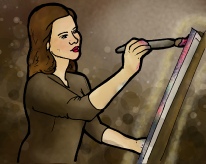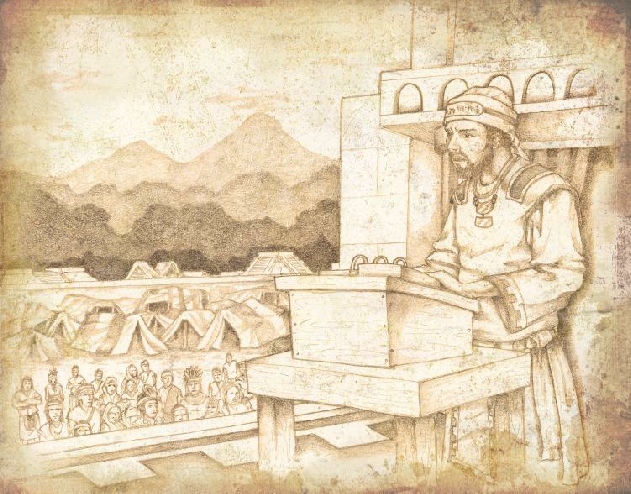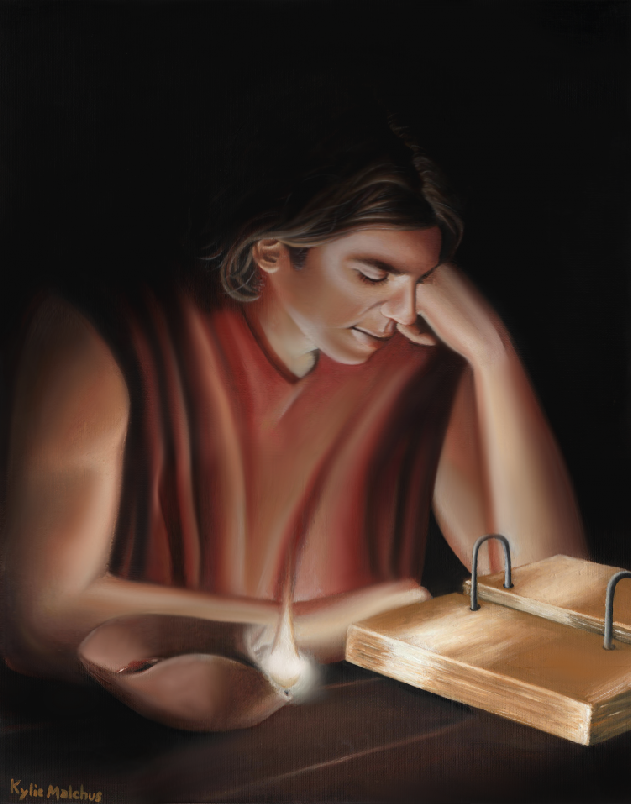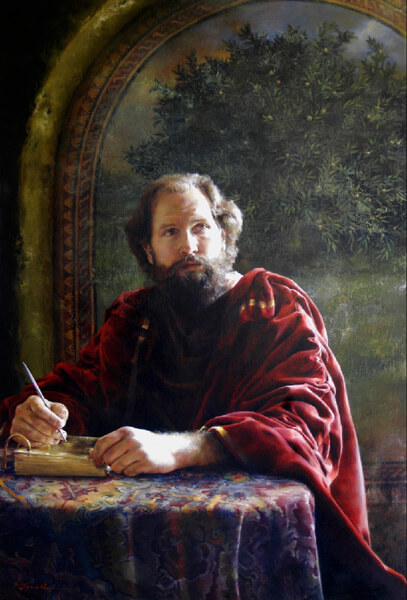






Book of Mormon Feast

An Artistic Tour of 2 Nephi 6-11
2 Nephi 6:1
BOOK OF MORMON ART
Jody Livingston
2 Nephi 11:2
BOOK OF MORMON ART
My Soul Delighteth in the Words of Isaiah
This is my depiction of Nephi studying Isaiah out of the brass plates. In order for
Nephi to have such a unique understanding of Isaiah's prophesies, he must have dedicated
countless hours to studying, pondering, and praying abou his words. I like to imagine
he studied by night, perhaps the only free time he had in the midst of journeying
in the wilderness, hunting, and ship building. I depicted Nephi reading by the light
of an Iron-
2 Nephi 11:2,3
BOOK OF MORMON ART
“I Will Send Their Words Forth {Jacob}.”
Elspeth Young
Artist’s Comments:
The story behind I Will Send Their Words Forth
Nephi, the son of Lehi, made plates out of gold and engraved on them a record of
his life and teachings. One set of plates focused on the history of his people,
the other set (which he made in about 569 BC) contained his prophecies and teachings.
(See 2 Nephi 5:28-
Nephi also consecrated his younger brother, Jacob, to be a priest and a teacher to
his people (2 Nephi 5:26). Before his death, Nephi entrusted the second set of plates
to Jacob, with a charge to write upon them only those "things which [Jacob] considered
to be most precious…And if there were preaching which was sacred, or revelation which
was great, or prophesying, that [Jacob] should engraven…them upon these plates" (Jacob
1:1-
Jacob's life was devoted to the ministry to which he had been set apart. He taught the people, kept a record of his ministry, and raised a family capable of perpetuating the tradition of devotion. In fact, his achievement as a husband and father is probably the most momentous of his life because he and his descendants, spanning six generations, kept the "small plates" for more than 400 years.
Within this painting, Jacob is portrayed obediently fulfilling the prophetic commission he received through his older brother. The expression in his eyes and the light upon his countenance represent what God did with the life Jacob consecrated to His service.
The composition of the painting communicates the role of prophets in relation to the word of the Lord and the people to whom a prophet ministers. The figure appears between the viewer and a representation of the tree of life, which is where a prophet always stands in relation to the children of God. For example, Lehi (Jacob's father) told his children of a vision he had had in which he had seen the tree of life, had gone forth to partake of its fruit, and, having done so, beckoned to his family to come and partake also (1 Nephi 8). Such is the type, or pattern, of the prophets from the Adam to the present day. And so it is with the writings of Jacob, which speak to us "the pleasing word of God, yea the word which healeth the wounded soul" (Jacob 2:8).
Jacob's countenance is evidence of profound spiritual sensitivity springing from a life of consecration, sacrifice, and, in his words: "great anxiety" for the welfare of his people. (See 2 Nephi 6:3, Jacob 1:5.) He saw the Savior hundreds of years before His earthly ministry, was visited by angels, and "heard the voice of the Lord speaking unto [him] in very word, from time to time" (2 Nephi 11:3, Jacob 7:5). He enjoyed the spirit of prophecy, and possessed a faith so firm that he could "command in the name of Jesus and the very trees [obeyed], or the mountains, or the waves of the sea" (Jacob 4:6). Notwithstanding such strength, however, he acknowledged his own weakness, and taught the important truth that "it is by [God's] grace, and his great condescensions unto the children of men" that man is given "power to do these things" (Jacob 4:7).
Symbolism in I Will Send Their Words Forth
Jacob's father, Lehi, taught his children about the tree of life and the word of
God that leads to it; that the tree and its fruit represent "the love of God, which
sheddeth itself abroad in the hearts of the children of men; wherefore, it is the
most desirable above all things…and the most joyous to the soul" (1 Nephi 11:22-
Jacob believed the teachings of his father and his older brother, and was faithful throughout his life. Thus, the image of the painting places Jacob in the midst of that straight and narrow path leading to salvation. By obedience and endurance to the end, Jacob placed himself in the vision that his father and brother had; a vision that is an allegory of mortality, of the earth and all its inhabitants.
An important part of Jacob's writings upon the small plates included the allegory of the tame and wild olive trees, written anciently among the Israelites by a prophet named Zenos. The allegory presents the scattering and the gathering of the House of Israel. Thus, another level of meaning or symbolism in the painting is that of the tame olive tree. In this light, Jacob reaches out to all the House of Israel, inviting them to "repent, and come with full purpose of heart, and cleave unto God as he cleaveth unto you. And while his arm of mercy is extended towards you in the light of the day, harden not your hearts" (Jacob 6:5).
A simple decorative border surrounds the wall painting of the tree. Loosely based on ancient Hittite and Egyptian border motifs, the border behind the figure suggests ocean waves and abundant harvests, reminding the viewer of the waters that carried Jacob's family across the great deep to the Promised Land, and the Lord's promise to Lehi and his posterity that "inasmuch as those whom the Lord God shall bring out of the land of Jerusalem shall keep his commandments…they shall prosper upon the face of this land" (2 Nephi 1:9).
Jacob's people were taught by Nephi to be "industrious, and to labor with their hands"
to create "exceedingly fine" workmanship (see 2 Nephi 5:16-
The figure is draped in the majesty and sumptuousness of a scarlet robe edged with gold. This mantle represents a robe of righteousness, symbolic of the authority and power of the priesthood with which God's prophets are endowed. Jacob taught the people about the resurrection of the dead, and, in describing the condition of the righteous at that day, declared that they "shall have a perfect knowledge of their enjoyment, and their righteousness, being clothed with purity, yea, even with the robe of righteousness" (2 Nephi 9:14).


